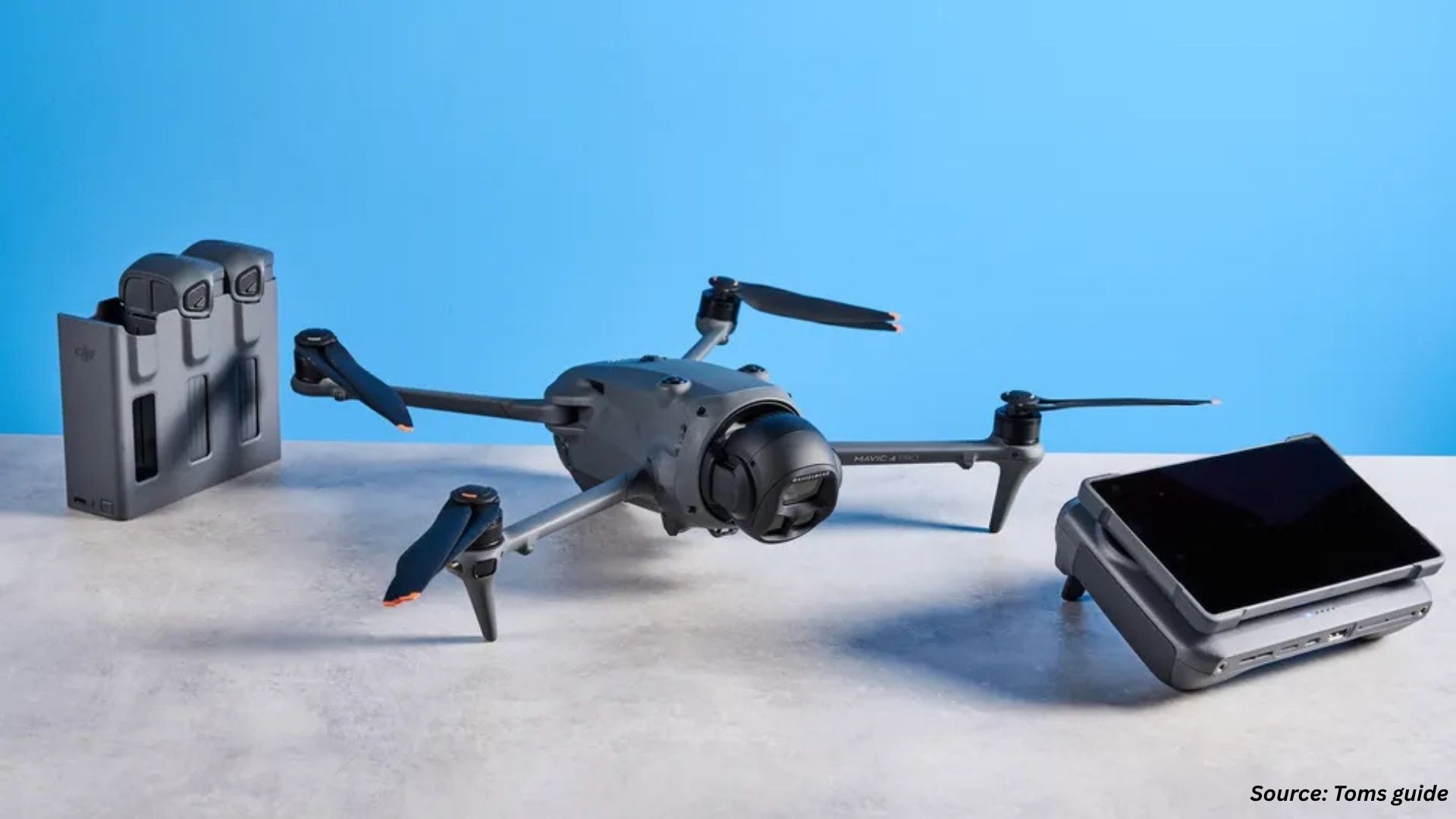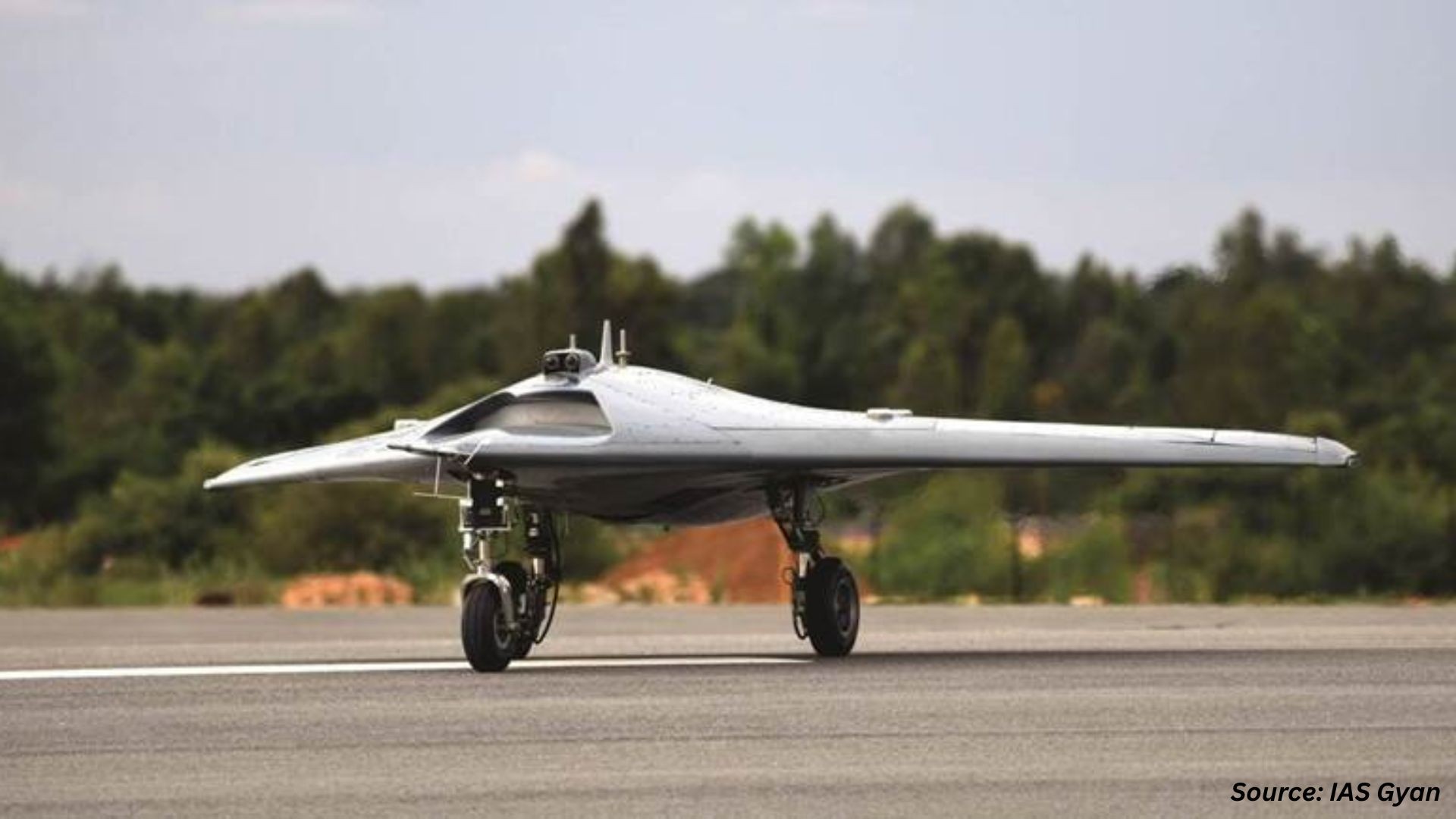Drone Innovation in Disaster Defense and Warfare
Published: 2025-09-10

The global drone landscape in 2025 is evolving rapidly, shaped by technological breakthroughs, humanitarian applications, and increasing deployment in military strategies. From DJI's consumer-grade marvels to the integration of drones in tsunami alert systems in Japan, and their weaponization in Eastern Europe, drones are redefining both civilian life and global defense postures.
DJI Mavic 4 Pro: Elevating Consumer Drone Performance
DJI remains a dominant force in the drone industry, and its newest consumer model—the DJI Mavic 4 Pro—raises the bar once again. Building on the success of the Mavic 3 Pro, this advanced drone features a powerful triple-camera setup, including a main Hasselblad camera capable of capturing ultra-detailed 100MP still images and recording breathtaking 6K and 4K video at 60 frames per second.
Advanced Controls and Storage Options in the Mavic 4 Pro
-
The DJI Mavic 4 Pro is compatible with the high-performance RC-2 controller.
-
DJI’s latest RC Pro 2 controller is considered the brand’s best to date, offering an ultra-bright and highly responsive display.
-
The standard Mavic 4 Pro includes 64GB of internal storage and a microSD card slot for expanded memory.
-
For content creators, the Creator Combo edition offers a generous 512GB of built-in storage.
Key Highlights:
-
Next-Gen Imaging: Equipped with a triple-camera system, including a 100MP Hasselblad sensor, the Mavic 4 Pro delivers professional-grade aerial photography and 6K/4K video at 60fps.
-
Enhanced Control Interface: Offers compatibility with both the RC-2 and the advanced RC Pro 2 controller, known for its ultra-bright, responsive touchscreen.
-
Flexible Storage Options: Comes standard with 64GB internal storage, expandable via microSD, while the Creator Combo boosts this to a massive 512GB for high-volume content capture.
Conclusion:
With its unmatched camera capabilities, intuitive controls, and generous storage configurations, the DJI Mavic 4 Pro firmly cements DJI’s leadership in the consumer drone market. It is a powerful, future-ready tool for serious creators and aerial imaging professionals.
Russia’s Expanding Drone Launch Infrastructure Against Ukraine
Russia persistently deploys Iranian-designed Shahed drones against Ukraine, launching them from various locations across its territory through an expanding network of both dedicated and repurposed facilities.
As of July 28, OSINT analyst Dnipro Osint (Harbuz) reports that there are three main drone launch sites within Russia, along with one additional launch location situated in occupied Crimea.
Key Features of the Russian Drone Launch Facility
-
Eight stationary launchers are installed at the site to support fixed-position drone operations.
-
A 2.8-kilometer stretch of road is designated for mobile vehicle-based launches, enhancing flexibility.
-
Satellite and open-source imagery suggest the facility is capable of launching up to 14 drones simultaneously.
-
In high-intensity operations, over 100 drones have reportedly been launched from this site in a single mission.
Summary Points:
-
Widespread Launch Network: Russia is operating from three primary launch sites within its territory and one in occupied Crimea, using both permanent and improvised facilities.
-
High-Capacity Operations: Facilities include eight fixed launchers and mobile platforms capable of handling large-scale drone deployments.
-
Mass Launch Capabilities: Open-source evidence suggests that up to 14 drones can be launched at once, with some operations exceeding 100 drones in a single offensive.
Conclusion:
Russia’s evolving drone infrastructure reflects a strategic shift toward high-volume, persistent UAV warfare. The integration of stationary and mobile launch systems allows for rapid deployment and overwhelming saturation attacks, intensifying the aerial threat to Ukraine’s defenses.
Japan’s Drone Deployment for Disaster Management
Japanese firm Blue Innovation has introduced the BEP Port Disaster Prevention System, a new disaster warning solution designed to enhance the ability of port towns and coastal regions in Japan to respond more effectively to natural disasters such as tsunamis, earthquakes, and heavy rainfall.
The system has already been successfully implemented in two locations:
-
Ichinomiya Town, Chiba Prefecture: A well-known surfing destination, Ichinomiya now has drones stationed at dedicated drone ports, ready for immediate deployment in the event of a tsunami warning. These drones provide real-time alerts to surfers, tourists, and residents along the extensive coastline, while also transmitting live footage to local authorities.
-
Sendai City, Miyagi Prefecture: Since 2022, Sendai has adopted the system as a supplementary layer to traditional disaster warning methods. It serves as a proactive measure to help prevent a repeat of the devastation caused by the 2011 earthquake and tsunami.
Expanding Safety with Drone-Based Emergency Response Systems
Blue Innovation envisions the BEP Port Disaster Prevention System becoming a nationwide standard, particularly in rural and aging communities where emergency personnel are limited. The company emphasizes that the system is not only designed for tsunami response but is also effective in a range of natural disasters—including floods, earthquakes, wildfires, and volcanic eruptions.
By leveraging drone technology, the system aims to deliver faster, more efficient emergency alerts and situational awareness, reducing reliance on human responders and enhancing public safety in critical moments.
Summary:
1. Targeted Deployment in High-Risk Areas:
Blue Innovation’s BEP Port Disaster Prevention System has been installed in Ichinomiya Town and Sendai City, providing drone-based real-time alerts and live surveillance during emergencies.
2. Versatile Multi-Hazard Response:
The system is not limited to tsunami warnings but also supports response to floods, earthquakes, wildfires, and volcanic eruptions by enhancing situational awareness and rapid information delivery.
3. Focus on Rural and Aging Communities:
Aimed at becoming a national safety standard, the system addresses personnel shortages in remote regions by automating critical warning and monitoring functions using drone technology.
Conclusion:
Blue Innovation’s BEP Port Disaster Prevention System demonstrates how advanced drone technology can modernize Japan’s disaster management strategy. By delivering real-time alerts and minimizing human dependency, it significantly improves emergency responsiveness—especially in vulnerable coastal and rural areas. As deployment expands, the system may become a critical infrastructure component in safeguarding communities from natural disasters.
Summary Table: Key Applications of Drone Technology in 2025
|
Region |
Focus Area |
Implementation Details |
|
Japan |
Disaster Management |
BEP Port system deployed in Ichinomiya and Sendai for real-time tsunami and disaster alerts |
|
Russia |
Military Operations |
Expanded UAV launch sites capable of high-volume drone warfare against Ukraine |
|
Global (DJI) |
Consumer Imaging |
DJI Mavic 4 Pro offers 100MP imaging, 6K/4K video, advanced controls, and storage |
|
Japan (National) |
Rural Emergency Support |
BEP system aimed at reducing disaster response times in underserved coastal communities |
Next Steps: Strategic Takeaways for Drone Stakeholders
If you are a policymaker, enterprise leader, or technology investor, here are five next actions to consider:
-
Integrate drone tracking and airspace regulation technology into urban planning models.
-
Invest in AI-enhanced navigation systems for both civilian and humanitarian drones.
-
Explore partnerships with emergency services to expand drone use in disaster-prone zones.
-
Monitor global military drone developments to forecast potential spillover risks.
-
Encourage cross-sector dialogue between drone innovators and public safety regulators.
Final Thoughts
By analyzing drones through the lens of current innovation, disaster resilience, and conflict, it is evident that the global drone market in 2025 is not merely about flight—it is about how far humanity can extend vision, reach, and impact in real time.
About the Author
 Karabi Sonowal is an experienced SEO Executive and Content Writer in digital marketing. She excels in SEO, content creation, and data-driven strategies that boost online visibility and engagement. Known for simplifying complex concepts, Karabi creates impactful content aligned with industry trends.
Karabi Sonowal is an experienced SEO Executive and Content Writer in digital marketing. She excels in SEO, content creation, and data-driven strategies that boost online visibility and engagement. Known for simplifying complex concepts, Karabi creates impactful content aligned with industry trends.
About the Reviewer
 Sanyukta Deb is a seasoned Content Writer and Team Leader in Digital Marketing, known for her expertise in crafting online visibility strategies and navigating the dynamic digital landscape. With a flair for developing data-driven campaigns and producing compelling, audience-focused content, she helps brands elevate their presence and deepen user engagement. Beyond her professional endeavors, Sanyukta finds inspiration in creative projects and design pursuits.
Sanyukta Deb is a seasoned Content Writer and Team Leader in Digital Marketing, known for her expertise in crafting online visibility strategies and navigating the dynamic digital landscape. With a flair for developing data-driven campaigns and producing compelling, audience-focused content, she helps brands elevate their presence and deepen user engagement. Beyond her professional endeavors, Sanyukta finds inspiration in creative projects and design pursuits.














Add Comment